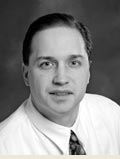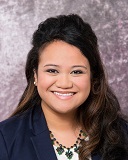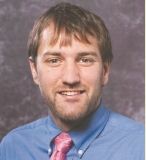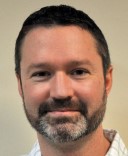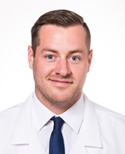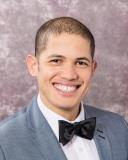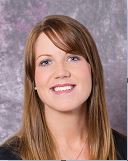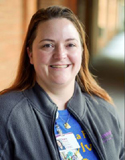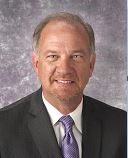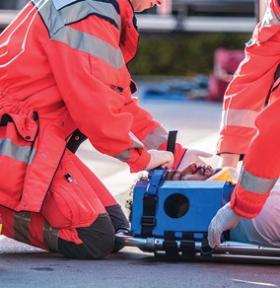
UPMC Hamot 2019 Emergency Medicine and Trauma Conference
Co-Sponsored by the Philadelphia College of Osteopathic Medicine
Research and evidence often surpass current practice standards; therefore, health care providers must be able to assess and implement improved patient care in advance of published standards. As new trends emerge, it is the responsibility of health care providers to facilitate implementation of practice change to incorporate emerging technologies and adapt to changing practice environments. Standardization of care in tertiary and regional emergency centers is a crucial factor in providing consistent, high-quality care to the regional community.
This activity has been designed to increase the participant’s critical thinking and knowledge of some common and not-so-common challenges in trauma and emergency medicine. Specific topics were selected based on challenges faced almost daily in trauma and emergency patient care, as well as ongoing and emerging health care concerns and trends. Ample time for questions and answers has been built in to each presentation. Audience members will also have the opportunity to speak one-on-one with presenters during refreshment breaks and lunch.
Target Audience
Trauma and emergency medicine physicians, nurses, advanced practice providers, and pre-hospital personnel, as well as primary care practitioners with an interest in trauma and emergency medicine will benefit from attendance at this activity.
Learning Objectives
At the conclusion of this activity, the participants should be able to:
- Describe physiologic signs to differentiate patients who would benefit from transfer to an accredited trauma center
- Recognize victims of domestic violence, including elder and child abuse, and human trafficking
- Discuss resources available in the region for victims of abuse and trafficking
- Review the process of the medical forensics team
- Describe key take-away points to be learned from practicing medicine in an austere environment
- Discuss essential details to review when educating the public on hemorrhage control to improve outcomes for trauma victims
- Describe appropriate placement of bleeding control equipment in public locations
- Discuss standards and regulations guiding use of whole blood for trauma resuscitation
- Review alternatives to potential intubation
- Discuss key points in identifying patients who meet criteria for intubation
- Describe background and decision algorithms used by Pittsburgh’s tactical emergency medical support (TEMS)
- Evaluate wounding patterns in civilian public mass shooting events
- Review lessons learned from the Tree of Life Synagogue shooting
- Describe design and major findings of three recent sepsis trials related to emergency medicine
- List two differences in outcomes from saline and Ringer’s volume therapy
- Describe the benefit and potential harm of the 2018 Surviving Sepsis Committee “1-hour sepsis care bundle”
- Discuss indications and contraindications for use of balloon occlusion
- Assess various approaches to unique medical diagnoses in emergency medicine
Additional Information
| Attachment | Size |
|---|---|
| 198.27 KB |
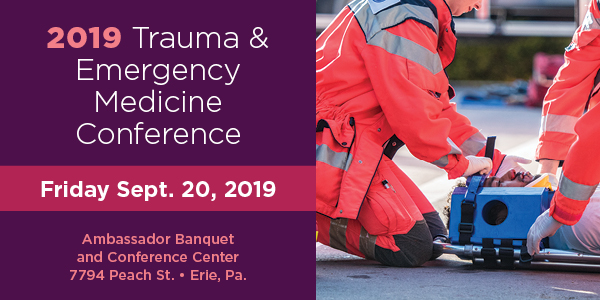
Program outline
7:30 – 8:00 a.m. Registration/Continental Breakfast
8:00 – 8:10 a.m. Introduction
8:10 – 8:50 a.m. Alert Criteria – When to Transfer, When to Consult*
Lindsey Roach, DO
8:50 – 9:20 a.m. Forensics – Abuse and Trafficking
Karin Wickwire, BN
9:20 – 9:50 a.m. Missions Trips – The Experience of a Lifetime
Jonathan Miller, MD
9:50 – 10:10 a.m. Refreshment Break
10:10 - 10:50 a.m. Stop the Bleed Basics*
Gregory Beard, DO
10:50 – 11:20 a.m. Whole Blood Resuscitation
Peter Depowski, MD
11:20 – 11:50 a.m. When to Intubate
Carlos Racedo Africano, MD
11:50– 12:30 p.m. Lunch
12:30– 1:30 p.m. After Action Report on the Tree of Life Synagogue Shooting*
Keith Murray, MD
1:30 – 2:30 p.m. What is New in Early Sepsis Care?
Donald Yealy, MD
2:30 – 2:45 p.m. Refreshment Break
2:45 – 3:25 p.m. Pros and Cons: Resuscitative Endovascular Balloon Occlusion of Aorta (REBOA)*
Melissa Loveranes, DO
3:25 – 3:55 p.m. ER Diagnostic Case Presentation
Jonathan Miller, MD; David Nelson, DO
3:55 p.m. Closing Remarks and Adjournment
*Approved for Trauma Credit Hours
The Ambassador Banquet and Conference Center in Erie is attached to the Courtyard by Marriott and Hilton Garden Inn.
Click here to visit the venue web site.
Travel
Click here for directions.
Gregory Beard, DO
Vice President of Medical Affairs and Chief Medical Officer
UPMC Hamot - Shock Trauma
Great Lakes Surgical Specialists
Division of General Surgery
UPMC Hamot
Peter Depowski, MD
Chief, Division of Laboratory Medicine
UPMC Hamot
Melissa Loveranes, DO
UPMC Hamot - Shock Trauma
Great Lakes Surgical Specialists
Division of General Surgery
UPMC Hamot
Jonathan Miller, MD
Associate Director
Emergency Medicine Residency Program
Department of Emergency Medicine
UPMC Hamot
Keith Murray, MD
Department of Emergency Medicine
Heritage Valley Sewickley Hospital
David Nelson, DO
Emergency Medicine Resident
UPMC Hamot
Carlos Racedo Africano, MD
Division of Hospitalists/Internal Medicine
UPMC Hamot
Lindsey Roach, DO
UPMC Hamot - Shock Trauma
Great Lakes Surgical Specialists
Division of General Surgery
UPMC Hamot
Karin Wickwire, DNP, AG-ACNP, SANE A/P
Nurse Practitioner/Forensic Coordinator
Departments of Critical Care and Emergency Medicine
UPMC Hamot
Donald M. Yealy, MD, FACEP
Department of Emergency Medicine
UPMC Presbyterian
All individuals in a position to control the content of this education activity are required to disclose all relevant financial relationships with any entity producing, marketing, re-selling, or distributing health care goods or services, used on, or consumed by, patients.
AMA ACCREDITATION
The University of Pittsburgh School of Medicine is accredited by the Accreditation Council for Continuing Medical Education to provide continuing medical education for physicians.
AMA DESIGNATION
The University of Pittsburgh designates this live activity for a maximum of 6.5 AMA PRA Category 1 CreditsTM. Physicians should claim only the credit commensurate with the extent of their participation in the activity. Other health care professionals are awarded 0.6 continuing education units (CEUs), which are equal to 6.5 contact hours.
AOA DESIGNATION
The Philadelphia College of Osteopathic Medicine is accredited by the America Osteopathic Association to provide osteopathic continuing medical education for physicians. The Philadelphia College of Osteopathic Medicine designates this program for a maximum of six and one half hours of AOA Category 1-A credits and will report CME and specialty credits commensurate with the extent of the physician's participation in this activity.
ANCC ACCREDITATION
UPMC Provider Unit is accredited as a provider of continuing nursing education by the American Nurses Credentialing Center's Commission on Accreditation.
ANCC CREDIT HOURS
A maximum of 6.5 nursing contact hours will be awarded. Participants will be able to claim credit commensurate with the extent of their participation in the program
PREHOSPITAL CONTINUING EDUCATION CREDITS
Continuing education credits for prehospital emergency medicine services personnel have been applied for.
TRAUMA CREDIT HOURS
Select sessions meet the requirements for trauma education hours. The maximum trauma education credit available for this conference is 4.0.
Available Credit
- 6.50 AMA PRA Category 1 Credit™The University of Pittsburgh School of Medicine is accredited by the Accreditation Council for Continuing Medical Education to provide continuing medical education for physicians.
- 6.50 ANCCUPMC Provider Unit is accredited as a provider of continuing nursing education by the American Nurses Credentialing Center’s Commission on Accreditation
- 6.50 Attendance
Registering online is the quickest and easiest way to reserve your space at UPMC Hamot conferences.
Visit our online registration site at https://ccehs.upmc.com.
Click the link for Upcoming Events and scroll down to the “Sept. 20, 2019 – UPMC Hamot 2019 Trauma & Emergency Medicine Conference” section on the web page.
Click the registration button and enter all the requested information.
After registering, an electronic confirmation will be sent to you.
Online registration is complete upon receipt of a confirmation email.
If you do not receive this email within 5–7 days of registration, please contact the UPMC Hamot CME Department at 814-877-5691.
To assure participation, registration and payment are expected by September 1, 2019.
MEB Registration:
If you are a UPMC Hamot nurse and plan to apply for MEB, do not submit a registration. Please contact the Staff and Nursing Education Department for further details.

 Facebook
Facebook X
X LinkedIn
LinkedIn Forward
Forward